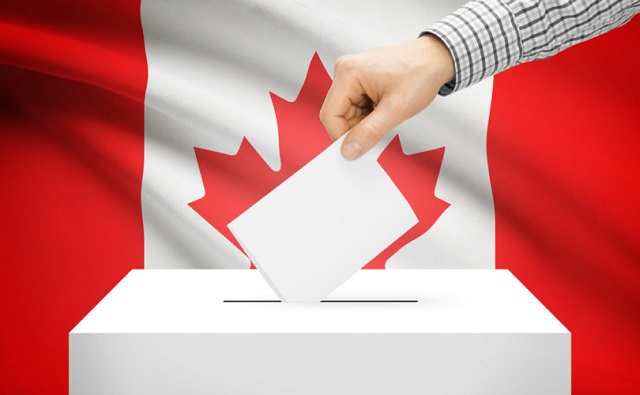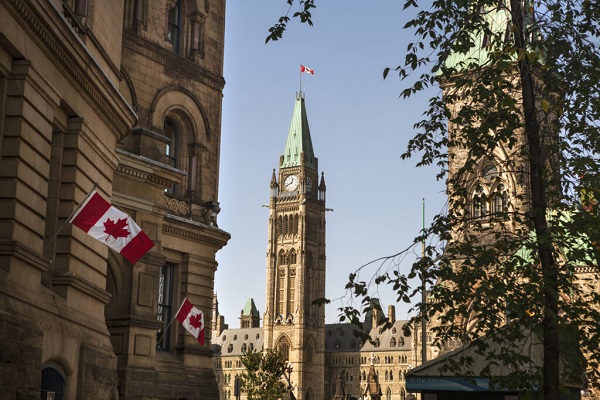David Clinton
You’re Actually Voting for THEM? But why?


 By David Clinton
By David Clinton
Putting the “dialog” back in dialog
I hate it when public figures suggest that serious issues require a “dialog” or a “conversation”. That’s because real dialog and real conversation involve bi-directional communication, which is something very few public figures seem ready to undertake. Still, it would be nice is there was some practical mechanism through which a conversation could happen.
It should be obvious – and I’m sure you’ll agree – that no intelligent individual will be voting in the coming federal election for any party besides the one I’ve chosen. And yet I’ve got a nagging sense that, inexplicably, many of you have other plans. Which, since only intelligent people read The Audit, leads me directly to an epistemological conflict.
I have my doubts about the prospects for meaningful leadership debates. Even if such events are being planned, they’ll probably produce more shouting and slogans than a useful comparison of policy positions.
And I have remarkably little patience for opinion polls. Even if they turn out to have been accurate, they tell us absolutely nothing about what Canadians actually want. Poll numbers may be valuable to party campaign planners, but there’s very little there for me.
If I can’t even visualize the thinking taking place in other camps, I’m missing a big part of Canada’s biggest story. And I really don’t like being left out.
So I decided to ask you for your thoughts. I’d love for each of you to take a super-simple, one question survey. I’m not really interested in how you’re planning to vote, but why. I’m asked for open-ended explanations that justify your choice. Will your vote be a protest against something you don’t like or an expression of your confidence in one particular party? Is it just one issue that’s pushing you to the polling station or a whole set?
I’d do this as a Substack survey, but the Substack platform associates way too much of your private information with the results. I really, really want this one to be truly anonymous.
And when I say this is a “super simple” survey, I mean it. To make sure that absolutely no personal data accompanies your answers (and to save me having to work harder), the survey page is a charming throwback to PHP code in all its 1996 glory.
So please do take the survey: theaudit.ca/voting.
If there are enough responses, I plan to share my analysis of patterns and trends through The Audit.
COVID-19
Vaccines: Assessing Canada’s COVID Response


 David Clinton
David Clinton
I planned to be “first in line” for the shots as soon as my age cohort became eligible. By early March however, COVID itself dropped by the house, leading to the most uncomfortable (although non life-threatening) week of my life.
It’s been five years since COVID hit and one part of me wants to stuff it all in a closet somewhere and forget about it. But perhaps certain events – and especially government errors and overreach – should be documented. So this post will identify actions at all levels of government from those early days that, given our understanding of the threat available through the benefit hindsight, were both misguided and damaging.
I haven’t completely forgotten the mood through the early months in 2020. Politicians faced near-unanimous public demand for an aggressive response. Much of that sentiment was the result of messaging coming from foreign governments (mostly in the U.S.). But the local sentiment was definitely there.
To be fair, Governments got some things right and, taking into account the chaos and uncertainty of those early months, even some of their mistakes were understandable. But it’s the job of government to lead. And to avoid making choices – even popular choices – that will lead to predictable harms.
Vaccine mandates starting in 2021 were a case in point. Federal authority largely stemmed from the 2005 Quarantine Act and the Contraventions Act that allowed officials to issue tickets for non-compliance with the Quarantine Act. Provincial mandates were based on laws like Ontario’s Emergency Management and Civil Protection Act. The question isn’t whether the mandates and their enforcement were legal, but whether they caused more harm than good.
As the first vaccines started arriving in Canada around February 2021, I planned to be “first in line” for the shots as soon as my age cohort became eligible. By early March however, COVID itself dropped by the house, leading to the most uncomfortable (although non life-threatening) week of my life.
After recovering, my family doctor advised me to wait three months before getting the shots so my body could get back to normal. During those months, I got access to preprint results from the Israeli study into natural immunity which showed that:
Natural immunity confers longer lasting and stronger protection against infection, symptomatic disease and hospitalization caused by the Delta variant of SARS-CoV-2, compared to the BNT162b2 two-dose vaccine-induced immunity
Those results were later confirmed by CDC and NEJM studies, among others.
Given that context, I didn’t see any justification for exposing myself to even minimal health risks associated with vaccines. Which meant that, despite demonstrably posing no threat to public health, I would (at various times) be unable to:
- Board domestic commercial flights, VIA Rail, Rocky Mountaineer trains, and cruise ships within Canada
- Board international flights or trains departing Canada
- Freely return to Canada through an overland point of entry
- Upon return to Canada, bypass the 14 day quarantine under the Quarantine Act
- Upon return to Canada via air, bypass the three day quarantine in (expensive) government-approved hotels
- Engage in ‘non-essential” activities like restaurants, gyms, events (details varied from province to province)
- Enter Parliament
- Seek employment in federally regulated air, rail, and marine sectors
What should Canadian governments have done? Remove restrictions on individuals with natural immunity, obviously. Which, by the way, would have come with the valuable bonus of entirely avoiding the truckers protest and consequent confrontations.
If authorities were reluctant to take us at our word on immunity, they could have followed the European Union’s lead by emulating their Digital COVID Certificate for proof of recovery. Were they worried about people without immunity creating fake certificates? Hard to take that one seriously. There were more fake vaccine passports littering the streets of Ontario than abandoned Toronto Maple Leafs car window flags in a normal early May.
In the end, my own suffering was negligible. I didn’t really want to visit family in the U.S. all that much anyway. But for millions of other Canadians, the real-world stakes were far higher. And all that’s besides the billions of dollars wasted during those years’ government policies.
To be sure, resisting unscientific street-level calls for vaccine mandates would have required courage. But shouldn’t acts of courage be a source of pride for public officials?
Subscribe to The Audit.
For the full experience, upgrade your subscription.
Business
Is Government Inflation Reporting Accurate?


 David Clinton
David Clinton
Who ya gonna believe: official CPI figures or your lyin’ eyes?
Great news! We’ve brought inflation back under control and stuff is now only costing you 2.4 percent more than it did last year!
That’s more or less the message we’ve been hearing from governments over the past couple of years. And in fact, the official Statistics Canada consumer price index (CPI) numbers do show us that the “all-items” index in 2024 was only 2.4 percent higher than in 2023. Fantastic.
So why doesn’t it feel fantastic?
Well statistics are funny that way. When you’ve got lots of numbers, there are all kinds of ways to dress ‘em up before presenting them as an index (or chart). And there really is no one combination of adjustments and corrections that’s definitively “right”. So I’m sure Statistics Canada isn’t trying to misrepresent things.
But I’m also curious to test whether the CPI is truly representative of Canadians’ real financial experiences. My first attempt to create my own alternative “consumer price index”, involved Statistics Canada’s “Detailed household final consumption expenditure”. That table contains actual dollar figures for nation-wide spending on a wide range of consumer items. To represent the costs Canadian’s face when shopping for basics, I selected these nine categories:
- Food and non-alcoholic beverages
- Clothing and footwear
- Housing, water, electricity, gas and other fuels
- Major household appliances
- Pharmaceutical products and other medical products (except cannabis)
- Transport
- Communications
- University education
- Property insurance
I then took the fourth quarter (Q4) numbers for each of those categories for all the years between 2013 and 2024 and divided them by the total population of the country for each year. That gave me an accurate picture of per capita spending on core cost-of-living items.
Overall, living and breathing through Q4 2013 would have cost the average Canadian $4,356.38 (or $17,425.52 for a full year). Spending for those same categories in Q4 2024, however, cost us $6,266.48 – a 43.85 percent increase.
By contrast, the official CPI over those years rose only 31.03 percent. That’s quite the difference. Here’s how the year-over-year changes in CPI inflation vs actual spending inflation compare:
As you can see, with the exception of 2020 (when COVID left us with nothing to buy), the official inflation number was consistently and significantly lower than actual spending. And, in the case of 2021, it was more than double.
Since 2023, the items with the largest price growth were university education (57.46 percent), major household appliances (52.67 percent), and housing, water, electricity, gas, and other fuels (50.79).
Having said all that, you could justifiably argue that the true cost of living hasn’t really gone up that much, but that at least part of the increase in spending is due to a growing taste for luxury items and high volume consumption. I can’t put a precise number on that influence, but I suspect it’s not trivial.
Since data on spending doesn’t seem to be the best measure of inflation, perhaps I could build my own basket of costs and compare those numbers to the official CPI. To do that, I collected average monthly costs for gasoline, home rentals, a selection of 14 core grocery items, and taxes paid by the average Canadian homeowner.¹ I calculated the tax burden (federal, provincial, property, and consumption) using the average of the estimates of two AI models.
How did the inflation represented by my custom basket compare with the official CPI? Well between 2017 and 2024, the Statistics Canada’s CPI grew by 23.39 percent. Over that same time, the monthly cost of my basket grew from $4,514.74 to $5,665.18; a difference of 25.48 percent. That’s not nearly as dramatic a difference as we saw when we measured spending, but it’s not negligible either.
The very fact that the government makes all this data freely available to us is evidence that they’re not out to hide the truth. But it can’t hurt to keep an active and independent eye on them, too.
Subscribe to The Audit.
For the full experience, upgrade your subscription.
-

 conflict2 days ago
conflict2 days agoOne dead, over 60 injured after Iranian missiles pierce Iron Dome
-

 Crime12 hours ago
Crime12 hours agoManhunt on for suspect in shooting deaths of Minnesota House speaker, husband
-

 Business2 hours ago
Business2 hours agoCarney’s European pivot could quietly reshape Canada’s sovereignty
-

 Alberta1 hour ago
Alberta1 hour agoAlberta’s grand bargain with Canada includes a new pipeline to Prince Rupert




